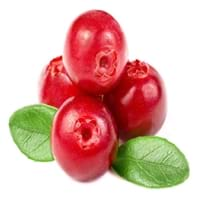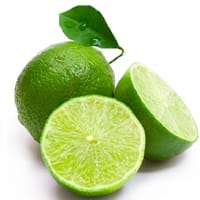Health Benefits
Cancer prevention, Heart care, Kidney stone treatment, Scurvy treatment, Ulcer prevention
Arthritis treatment, Cholera treatment, Gout treatment, Heart care, Piles treatment, Scurvy treatment
General Benefits
Anti-inflammatory properties, Boosts immune system, Digestive aid, Fights against infections, Strengthens bones
Cures fever, Digestive aid, Eye care, Maintains healthy cholesterol level, Treatment of common cold
Skin Benefits
Anti-aging benefits, Reduces wrinkles, Skin rejuvenation, Treatment of acne
Anti-aging benefits, Skin rejuvenation, Treatment of acne, Treatment of dark spots
Hair Benefits
Promotes longer and healthier hair, Protects hair, Treatment of dandruff
Promotes longer and healthier hair, Treatment of dandruff
Allergy Symptoms
Anaphylaxis, Breathing difficulty, Itching, Skin rash, Swelling of mouth, tongue or lips
Breathing difficulty, Coughing, Eye irritation, Hives, Inflammation, Nasal congestion, Runny nose, Skin rash, Wheezing
Side Effects
Allergic reaction, Diarrhoea, Nausea, Stomach pain, Vomiting
Chances of sunburn
Best Time to Eat
Any time except an hour after meal, Don't consume at night and before bed
Along with meal, Best to drink warm water with lime on an empty stomach, Don't consume at night and before bed
Vitamin B5 (Pantothenic Acid)
Vitamin C (Ascorbic Acid)
Vitamin K (Phyllochinone)
Calories in Fresh Fruit with Peel
Not Available
Calories in Fresh Fruit without Peel
Not Available
Calories in Frozen Form
Not Available
Calories in Dried Form
Not Available
Type
Berry
Citrus, Tree fruit
Season
Autumn
All seasons
Varieties
Early Black, Howes, Ben Lear and Stevens
Key lime, Persian lime, Kaffir lime, Desert lime, Palestine Sweet Lime, Mexican Sweet Lime, Mary Ellen Sweet Lime
Inside Color
White
Light Green
Taste
Bitter, Tart
Acidic, Sour
Origin
North America
India
Soil Type
Clay, Sandy, Well-drained
Clay loam, Sandy loam
Climatic Conditions
Warm
Sunny, Warm to hot climate
Facts about
- Europeans thought the cranberry blossom looked like the head of a sandhill crane, hence the name Cranberry.
- They are also known as bounce berries as they bounce when they ripe.
- Cranberries do not grow in water.
- Lime is the called as the powerhouse of flavors.
- Fresh lime juice is so acidic that it can dissolve concrete.
- Limes are more fragrant and acidic than lemons.
- Persian limes are almost seedless and thorn less.
Top Producer
United States of America
China
Other Countries
Azerbaijan, Belarus, Bulgaria, Canada, Latvia, Macedonia, NA, Romania, Tunisia, Ukraine
Argentina, Brazil, India, Mexico
Top Importer
Europe
United States of America
Top Exporter
United States of America
Mexico
Botanical Name
Vaccinium Macrocarpon
Citrus aurantifolia
Synonym
Oxycoccus macrocarpus
not available
Subkingdom
Tracheobionta
Tracheobionta
Division
Magnoliophyta
Magnoliophyta
Class
Magnoliopsida
Magnoliopsida
Subclass
Dillenhidae
Rosidae
Order
Ericales
Sapindales
Family
Ericaceae
Rutaceae
Species
Vaccinium macrocarpon
C. aurantifolia
Generic Group
Heath
Citrus fruit
Difference Between Cranberry and Lime
We might think that Cranberry and Lime are similar with respect to nutritional value and health benefits. But the nutrient content of both fruits is different. Cranberry and Lime Facts such as their taste, shape, color, and size are also distinct. The difference between Cranberry and Lime is explained here.
The amount of calories in 100 gm of fresh Cranberry and Lime with peel is 46.00 kcal and Not Available and the amount of calories without peel is Not Available and 30.00 kcal respectively. Thus, Cranberry and Lime belong to Low Calorie Fruits and Low Calorie Fruits category.These fruits might or might not differ with respect to their scientific classification. The order of Cranberry and Lime is Ericales and Sapindales respectively. Cranberry belongs to Ericaceae family and Lime belongs to Rutaceae family. Cranberry belongs to Vaccinium genus of Vaccinium macrocarpon species and Lime belongs to Citrus genus of C. aurantifolia species. Beings plants, both fruits belong to Plantae Kingdom.









